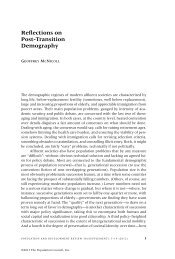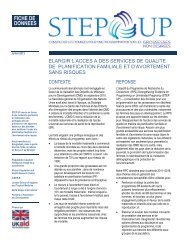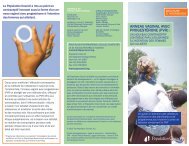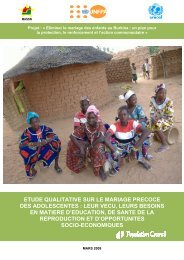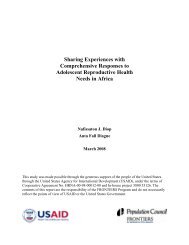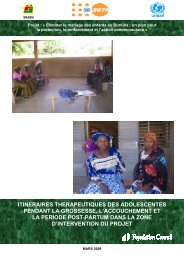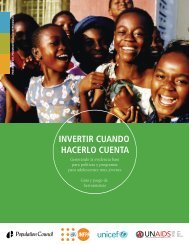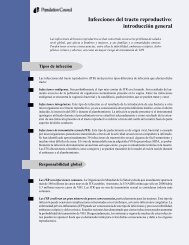Community Health Volunteer's Training Manual - Population Council
Community Health Volunteer's Training Manual - Population Council
Community Health Volunteer's Training Manual - Population Council
You also want an ePaper? Increase the reach of your titles
YUMPU automatically turns print PDFs into web optimized ePapers that Google loves.
<strong>Community</strong> participatory tools<br />
1. The Male group and the Female group stay at one place and identify health problems in<br />
the community.<br />
2. The site walk through the town groups visits a health facility (<strong>Community</strong> <strong>Health</strong><br />
Compound - CHC). This is to enable them learn about services provided at the site,<br />
problems facing the site, and if possible interview a client. It provides staff members<br />
with feedback on conditions and cleanliness of the CHPS-zone.<br />
3. The community walk through group expresses their ideas and shares information<br />
in visual way. In other words, they capture what they see on a map and share the<br />
information using the map.<br />
4. After the activity the groups assemble at one place to discuss their findings and list the<br />
problems identified. They decide on which problems to work on first, i.e. they select<br />
the priorities or the most important. Each group prepares an action plan on three of<br />
the problems. These are problems which can be solved immediately by community<br />
members using their own resources.<br />
Box 2.4.10 “Problem Tree” Approaches<br />
The “Problem Tree” and the “But Why” approaches are designed to assist community<br />
members identify a problem, its consequences and its root cause or causes. For instance,<br />
whilst community members may not see stagnant water as an environmental problem, a<br />
simple illustration using the “Problem Tree” can bring this out clearly. In the illustration, “The<br />
Problem” is represented by the trunk of the tree, “The Causes” are represented by the roots,<br />
and “The Effects” or consequences are represented by the branches (Figure 2.4.2.).<br />
Exercise 2.4.7<br />
Objective<br />
1. To demonstrate the<br />
use of the ‘Problem<br />
Tree’ and ‘But<br />
Why’ approach to<br />
diagnose a problem.<br />
Time: 20 minutes<br />
Question<br />
1. How are the tools<br />
used to gather<br />
information?<br />
Instruction to the Facilitator<br />
Materials required<br />
Flip chart and felt pens<br />
1. Let participants come up with 4 health problems in<br />
their communities.<br />
2. Then divide participants into 2 groups<br />
3. Let one groups use the Problem Tree to find the<br />
causes and consequences of one of the identified<br />
problem<br />
4. Let the other group use the “But why” approach to<br />
find out the causes of the other problem identified<br />
5. Let the groups meet at a plenary to discuss their<br />
findings<br />
133



